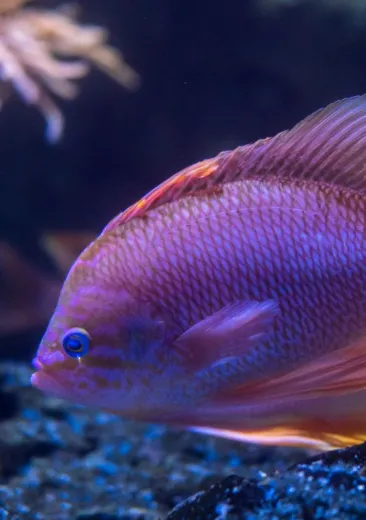It feeds mainly on fish, and occasionally on crustaceans and cephalopods. Divers have witnessed pollacks following them to hunt in the sand stirred up by their diving fins.

Identity card
Pollack
- Scientific name:
- Pollachius pollachius
- Family:
- Gadidae
- Class:
- Actinopterygii
- Phylum:
- Chordata
- Year of description:
- Linnaeus, 1758
- IUCN Status:
- Least Concern
- Distribution:
-
Waters of the north-east Atlantic, from Iceland (rare) and the north of Norway down to Portugal.
- Habitat:
-
The pollack lives between two waters from the coast to a depth of 150 metres.
- Size:
The average length of the pollack is between 22 and 75 cm.
- Diet:
-
Fish, crustaceans and cephalopods







